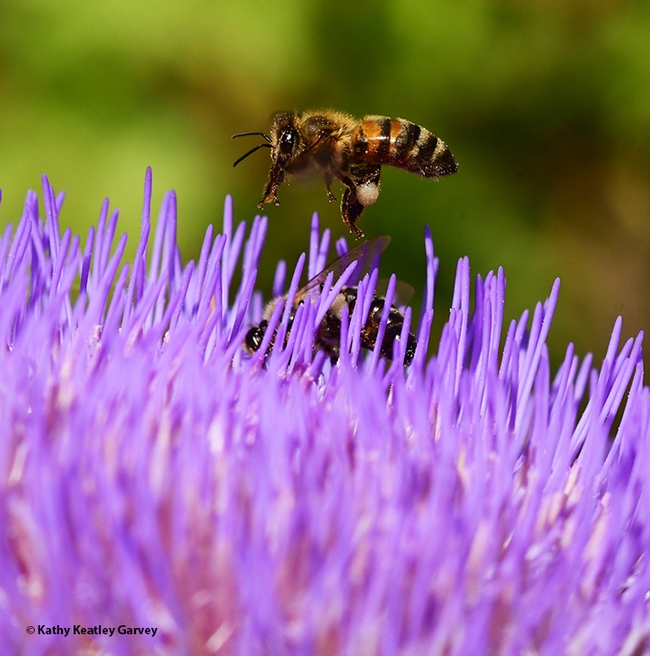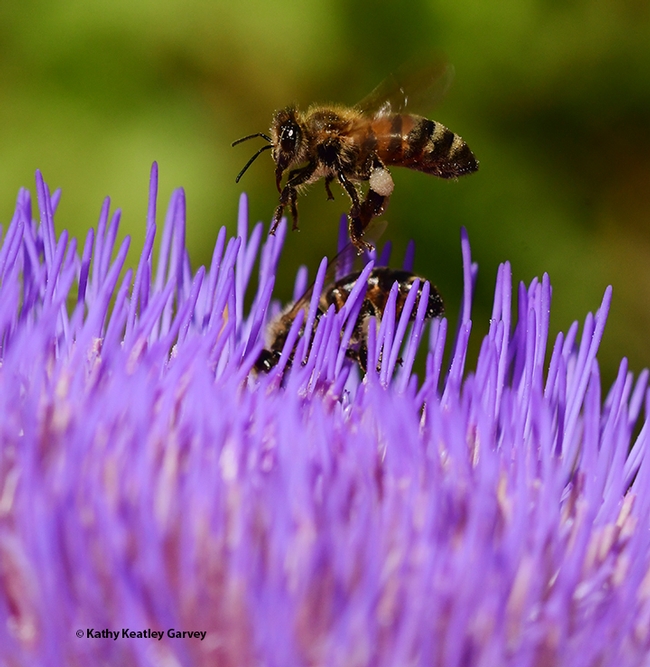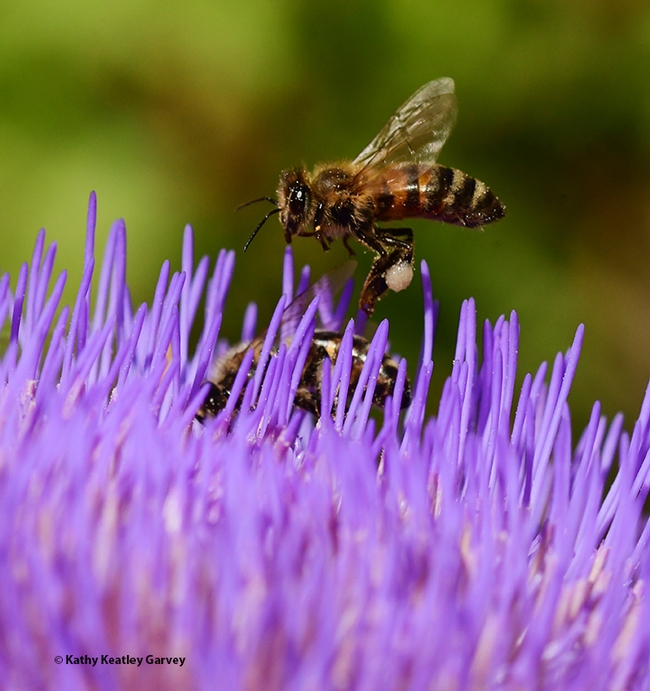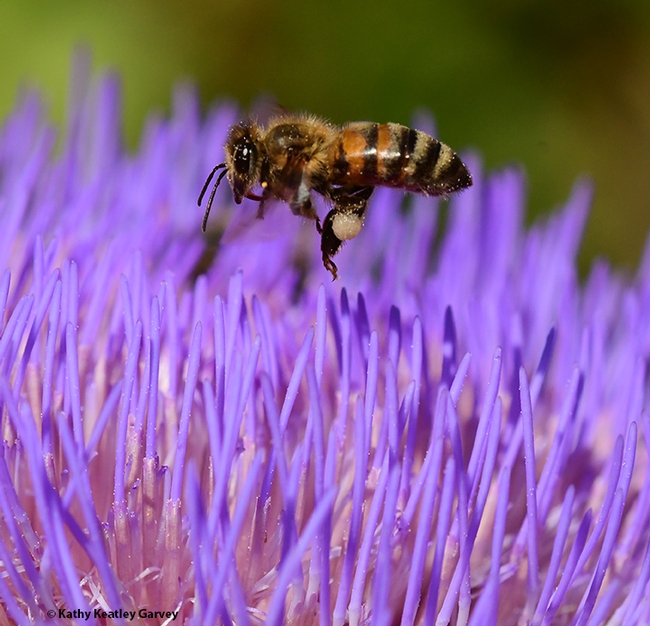When you're a honey bee and you're packing pollen and approaching your landing--an artichoke thistle--it's a good idea to clean your proboscis (tongue) first.
Caught in flight: a honey bee doing a little grooming.
This one hovered like a syrphid fly or flower fly, perhaps waiting for the bee below her to move a bit as a few seconds lapsed.
"A long tongue (proboscis--pronounced pro-BAH-sis) is used to suck nectar from flowers," Explains Norman Gary, UC Davis emeritus professor of entomology, in his book, Honey Bee Hobbyist: The Care and Keeping of Bees. "It functions as a straw, yet it unfolds and retracts like a miniature landing gear. Extemely sensitive taste buds at the tip trigger the sucking response for the intake of nectar and water."
The honey bee touched down, the grooming complete, and the other bee gone.
Just a few seconds in the life of a honey bee cleaning its "miniature landing gear" before it lands on another thistle.
Attached Images:

A honey bee begins cleaning her proboscis (tongue) before landing on a blossoming artichoke. (Photo by Kathy Keatley Garvey)

The honey bee finishes her grooming--cleaning her tongue. (Photo by Kathy Keatley Garvey)

Landing interference? The honey bee spots another bee blocking her landing. (Photo by Kathy Keatley Garvey)

All clear below! A honey bee touches down on the artichoke thistle. (Photo by Kathy Keatley Garvey)